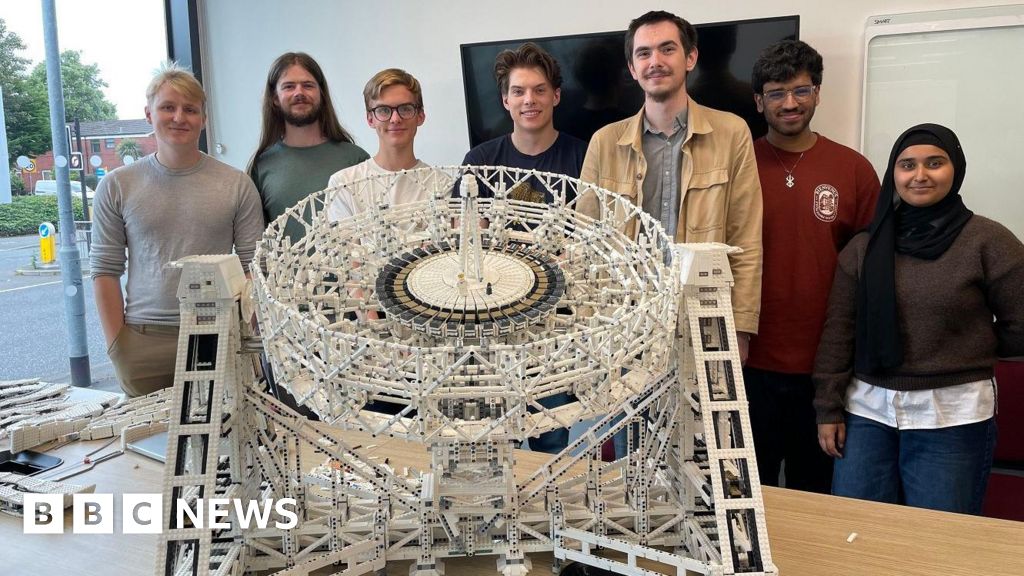
A student who built a Lego version of the landmark Lovell telescope at Jodrell Bank with 30,500 bricks said it was the “most challenging build I’ve ever done but also the most fun”.
The observatory, constructed in the Cheshire countryside after World War Two, tracked US and Russian craft during the space race and was granted UNESCO World Heritage status in 2019.
Physics student James Ruxton and six other students at the University of Manchester began building the model in April to mark the observatory’s 80th anniversary.
He said he has been a “big fan” of Lego all his life, “so recreating something as iconic as the Lovell is like taking that to the next level!”.
Mr Ruxton spent six months designing the 30kg model with computer software, and even designed some Lego pieces specifically with a 3D printer.
The model dish itself weighs 12.5kg and had to be reinforced with a steel pole like the actual telescope.
The structure will be displayed at the Schuster building, which accommodates the university’s physics department near Brunswick Street.
Professor Chris Parkes, the university’s head of physics, said the model was a “celebration of Manchester’s history of discovery”.
He said: “Jodrell Bank has always been a symbol of bold innovation – pushing the boundaries of science and engineering from its earliest days.
“What the students have created with this Lego build is a perfect reflection of that spirit.”
Scientific research began at Jodrell Bank Observatory in 1945 when the physicist Sir Bernard Lovell came to the University of Manchester.
The site pioneered the then new science of radio astronomy, which used radio waves instead of visible light to understand the universe.

